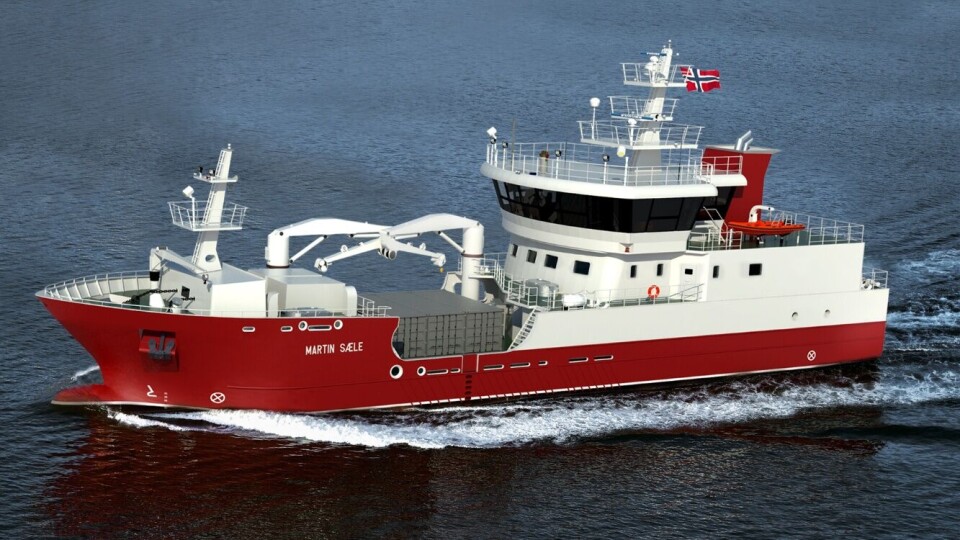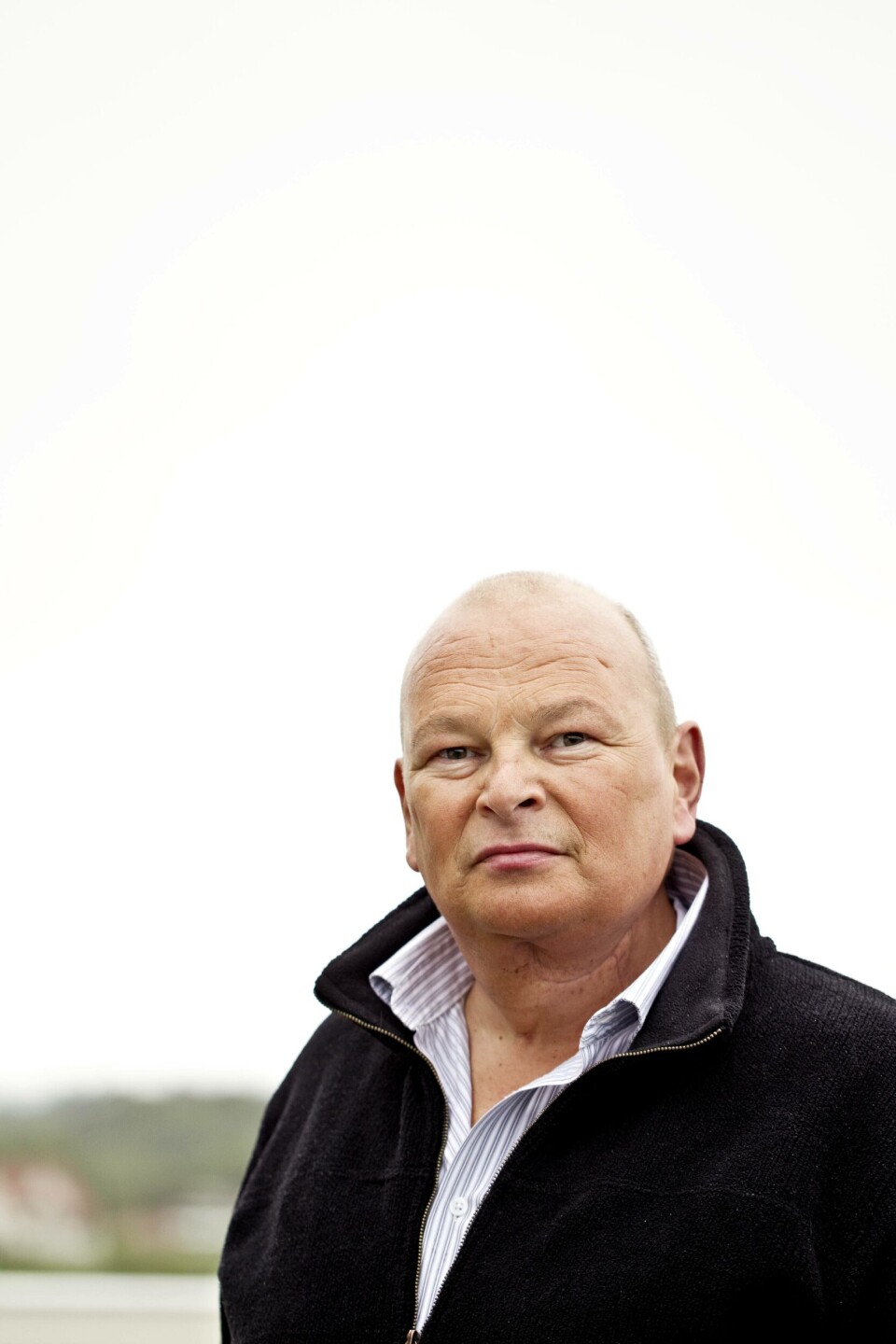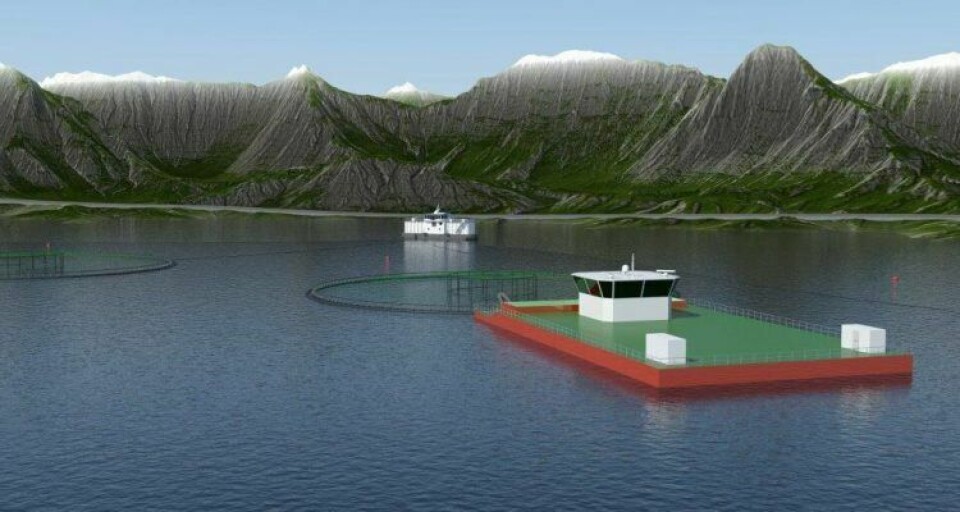
Star set for Shetland
A new wellboat which is currently being built in Spain by Salmon Star, is due to be delivered to Grieg Seafood Shetland in the next few weeks.
Called the Martin Sæle, the new vessel is 49.75m long, with a beam of 12.6m, and has a 1000m3 tank capacity. It is due to leave the Gondon yard in Spain, where it’s being built, in a couple of weeks.

“It’s leaving the yard on December 7th before heading to Norway for a christening ceremony then being delivered to Shetland,” Salmon Star’s CEO, Svein Martin Sæle, explains to Fish Farming Expert.
“It’s ready for anything,” adds Svein, “it will be operated by two crews of 5, working in shifts, and comes with all the key equipment – it has UV and filters which comply with the latest lice treatment regulation as well as a peroxide unit and can also be used for smolt transfers and even for harvesting operations. It also comes with an retractable side thruster in the front of the ship, which can turn 360 degrees when it is down, this to help manoeuvre the vessel, as well as propel it in an emergency and it can take the ship up to 6 knots, which offers an extra safety aspect both for the boat’s crew and the fish.”
An earlier version of the vessel, which was also set to join GSS, met with a rather unfortunate fate.
“Do you remember the story of the wellboat that capsized and sank at a Turkish shipyard two years ago?” Svein Martin asks.
“That was my vessel – but thankfully no one lost their lives and it was still under contract with the shipyard at that point. We had to cancel the contract, turn around and start again in Spain,” he recalls.
“Two years later we are now ready for sailing from Spain with a new vessel and Grieg have been fantastic about the delay,” he adds.
Fortunately, production of the new and improved Martin Sæle has been considerably smoother.
“It’s the first wellboat they’ve built here – they normally make tugs – but we’ve had a good experience in Spain,” Svein Martin reflects.
While it might be the yard’s first foray into the world of wellboats, it is by no means Svein Martin’s debut. “I’ve been in the wellboat business for over 30 years,” he explains, “and our boats have been operating in Shetland for almost 20 – I first arrived there in 1998, delivering a boat for a company called Lessinger.”
Svein Martin currently owns two wellboats with the family . The other, the Gerda Sæle, was built in 2000, but start working in Shetland in 2006 and is also currently contracted out to Grieg in Shetland.
“When the new boat arrives the Gerda Sæle is going to return to Norway to have two Optilicers installed. It should be back in Shetland by the end of January, and it can then be used as a multi-purpose vessel,” he explains.
Fresh schemes afoot
The construction of the Martin Sæle is by no means the only project Svein Martin is working on at the moment, however, and he is currently looking to raise the funds to construct a new type of treatment barge – one that might one day replace the need for wellboats in many locations.

The concept, which he drew up with his son, Martin, and another associate Nils Landro, is a barge with twice the capacity of the biggest wellboats currently in operation. The trio's company, Aqua Star, includes involvement from six Norwegian salmon producers. He hopes the idea is revolutionary enough to be worth the award of six development concessions - one for each producer - from the Norwegian Directorate of Fisheries with whom he lodged an application last week.
“The barge is self-propelled around the cages, although it would need to be towed between sites, and is going to have a 6000m3 capacity, so it is possible to process even the biggest cages at once,” Svein Martin explains.
And it is not purely the size of the barge that’s novel, as it also comes equipped with a patented method – similar to the lock systems used in canals – for gently drawing the salmon out of a cage.
“We have come up with a concept, which can raise and lower the water levels inside compartments in the barge so that fish can be gently drawn in, then treated before being gently pushed back out,” Svein Martin explains.
“This is much gentler on the fish than using a pump, as well as being more quiet, and is therefore much less stressful for them,” he adds.
The barge is set to come equipped with six 500mm pipes for drawing the fish into the treatment area, which means the cage can be processed “very quickly”, according to Svein Martin, while it will also be fitted with a reverse-osmosis system with the capacity to produce 12,000 m3 of fresh water every 24 hours – making it ideal for AGD treatments as well as delousing. The nature of the system means that the fresh water can be reused too.
“While wellboats need to change their water after one treatment – which is costly and can be environmentally suspect – we are able to reuse the same water, as we will have systems to remove the CO2 as well as being able to constantly top it up the fresh water supply,” he claims.
“The deck area has plenty of space, so it’s possible to install different treatment systems, depending on the job in hand,” he adds.
As for the cost? Svein Martin believes the NOK 300-400 million price tag is justified given the capacity of the design.
“This could be a big development for the future of the salmon industry – it’s a better, cheaper and more environmentally friendly way of controlling the lice situation without using chemicals. But first we need to get the government to see the potential of the idea,” Svein Martin concludes.























































